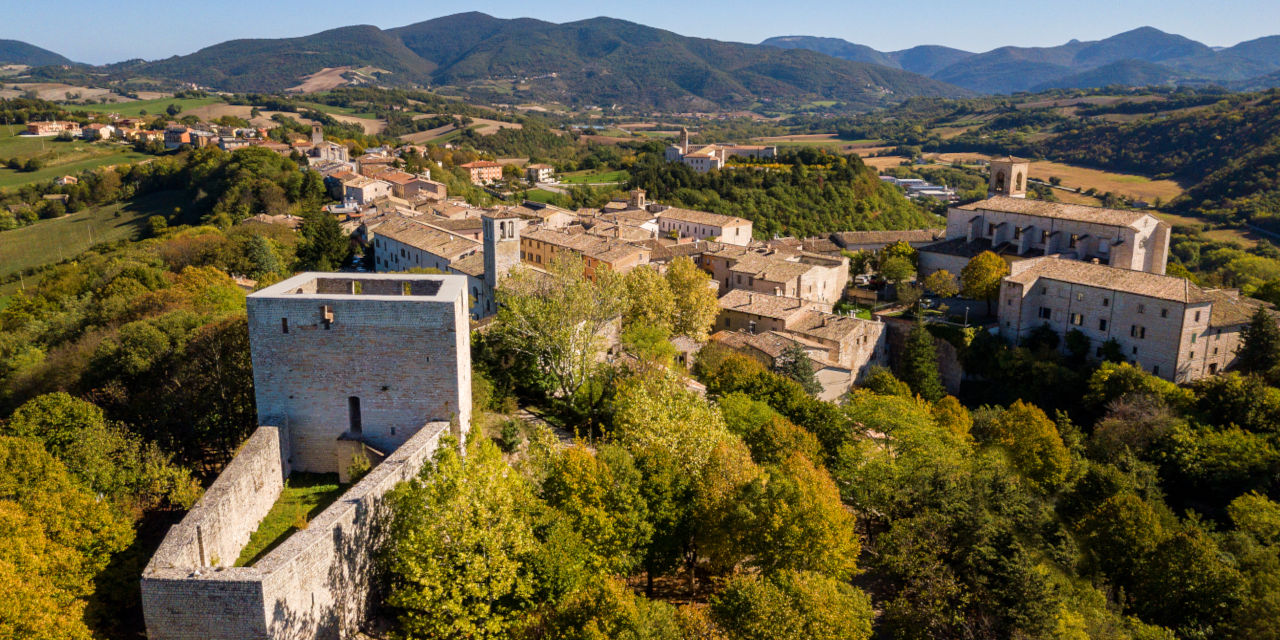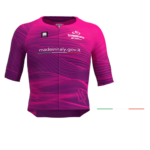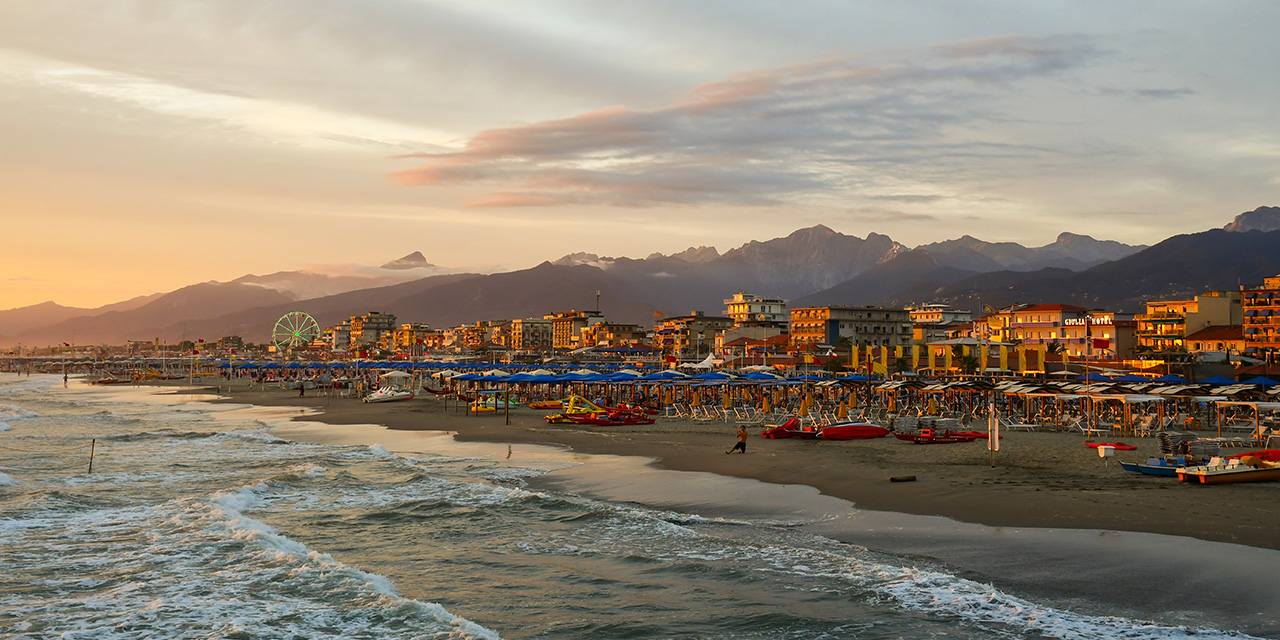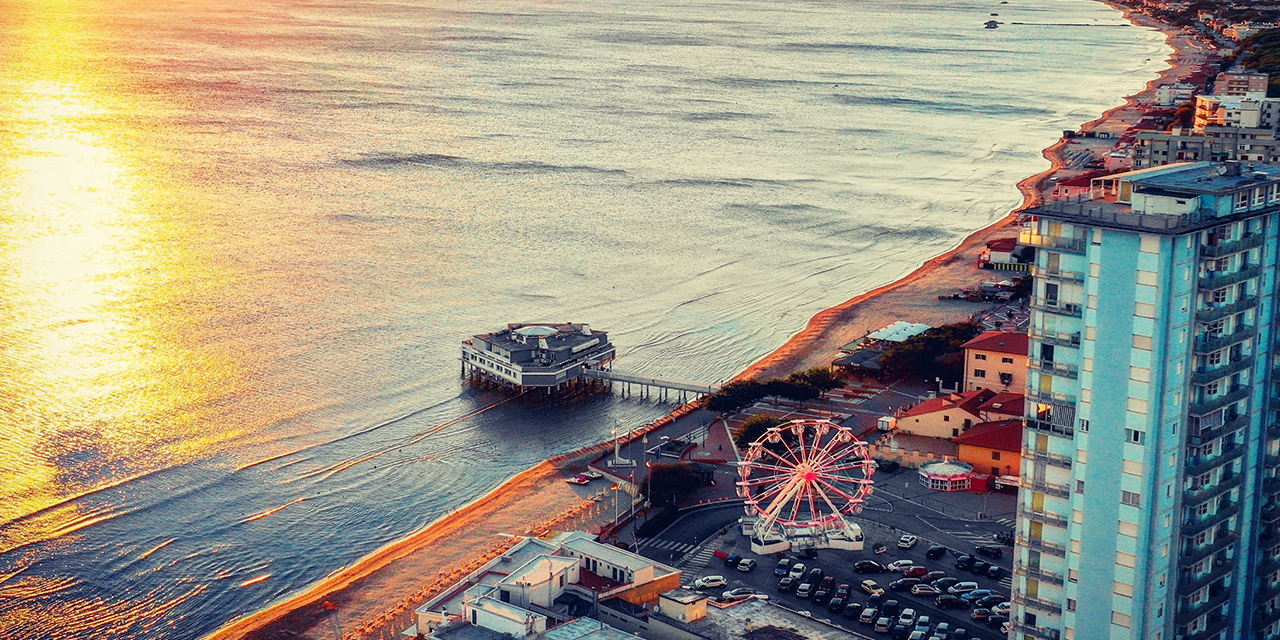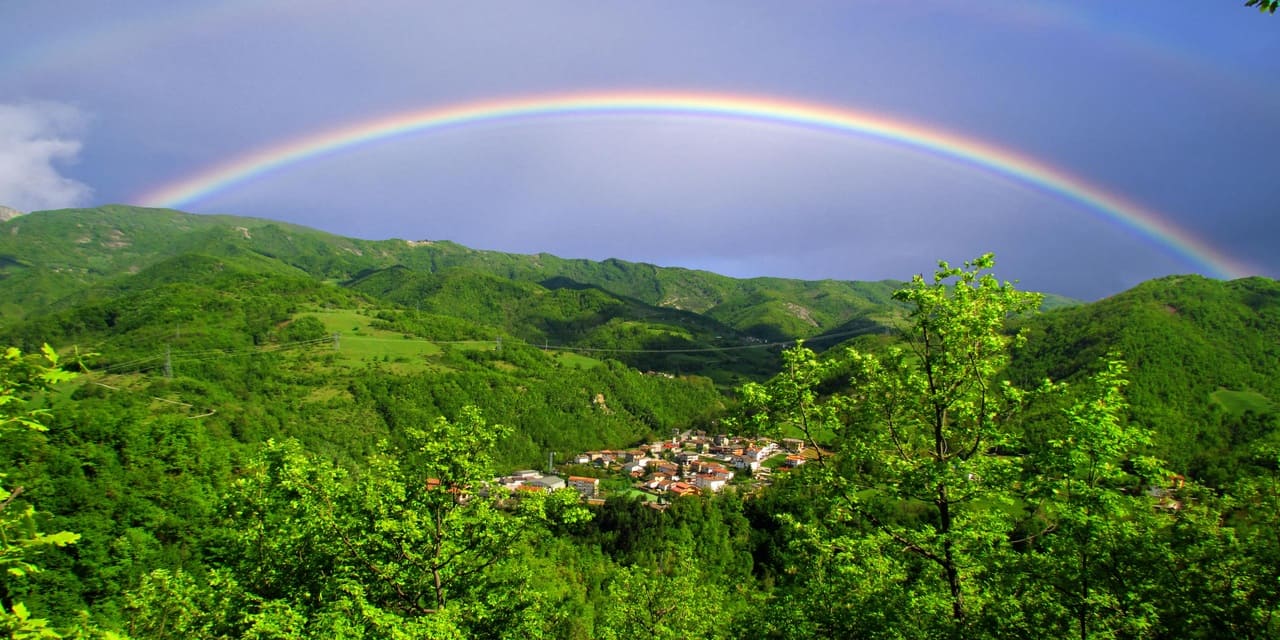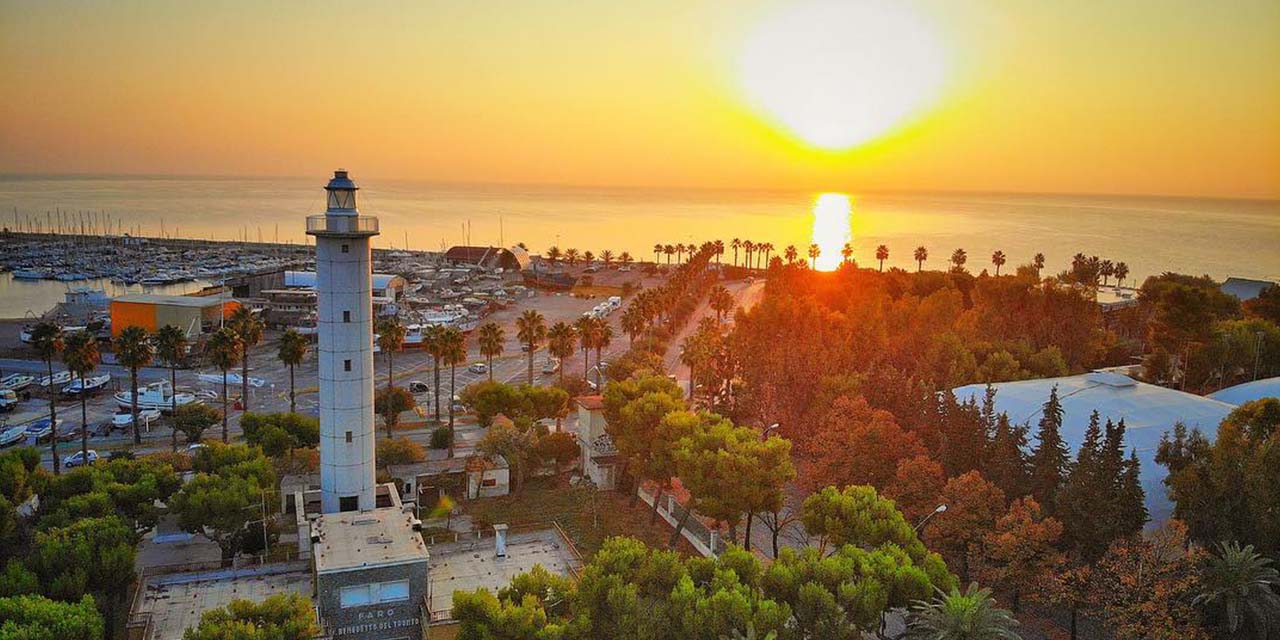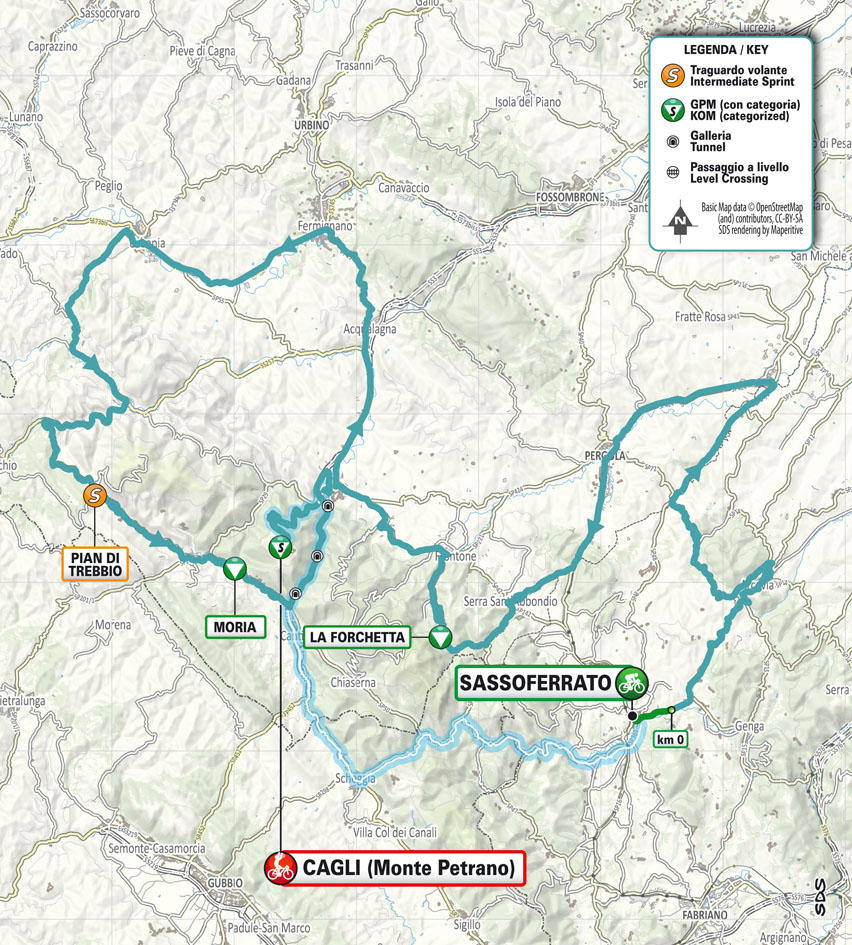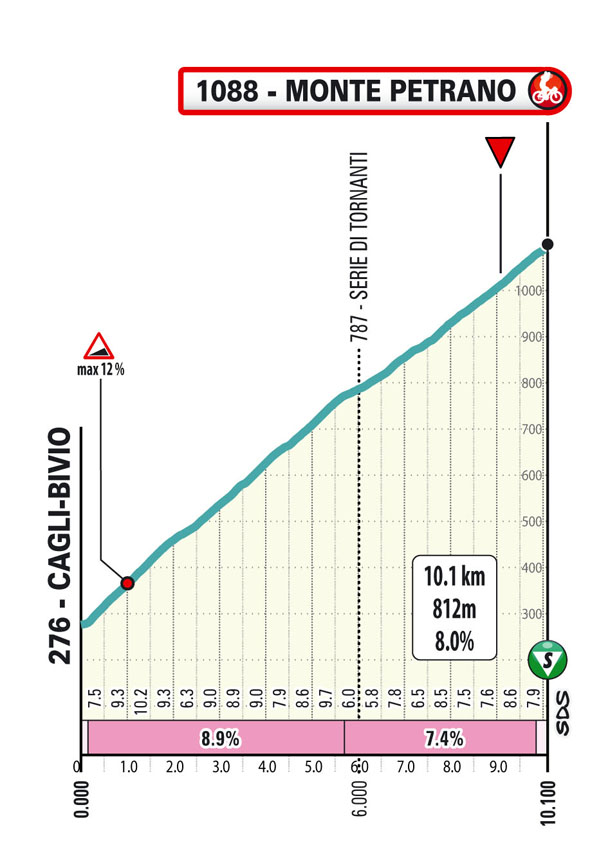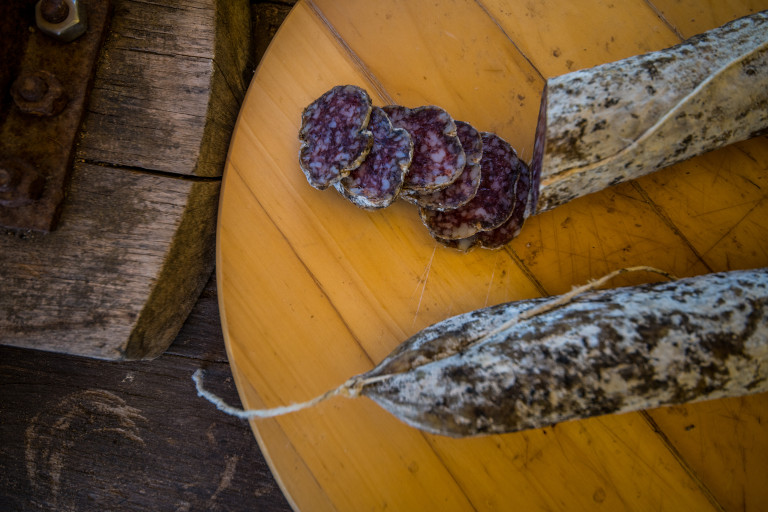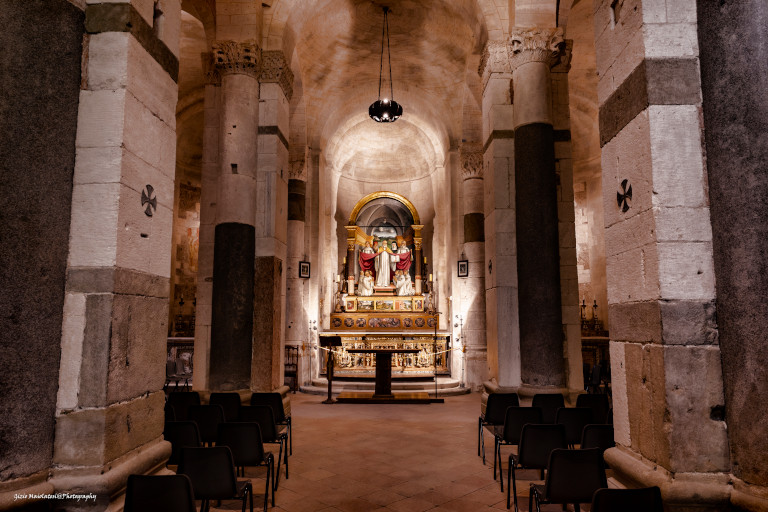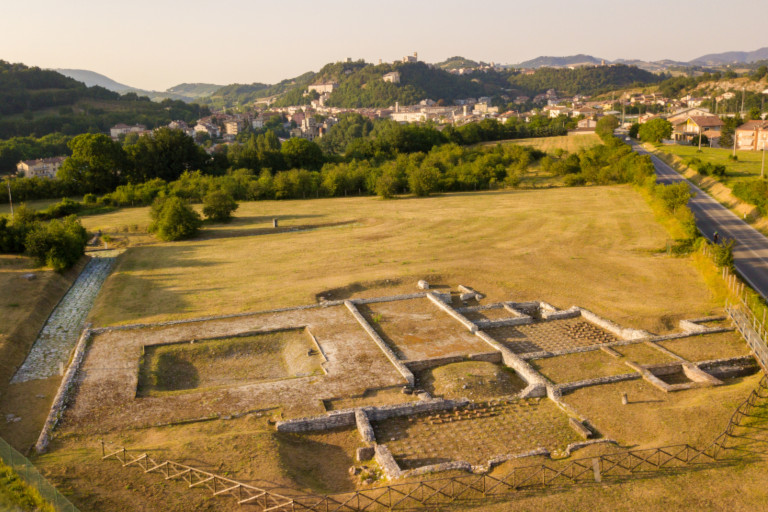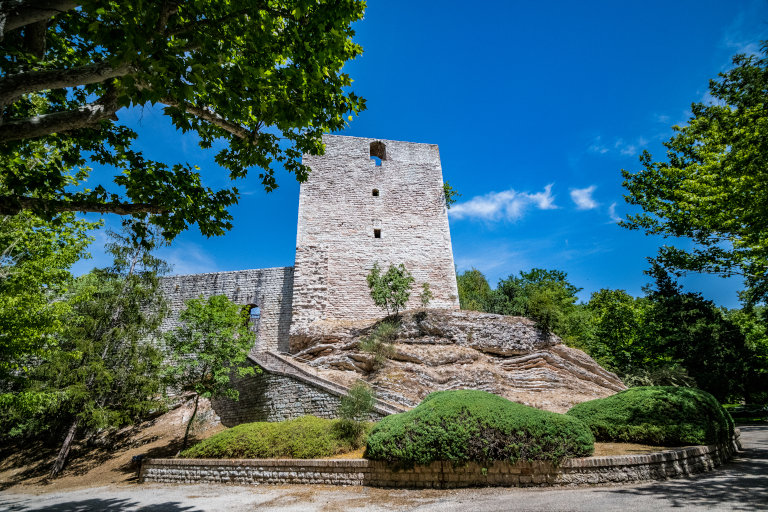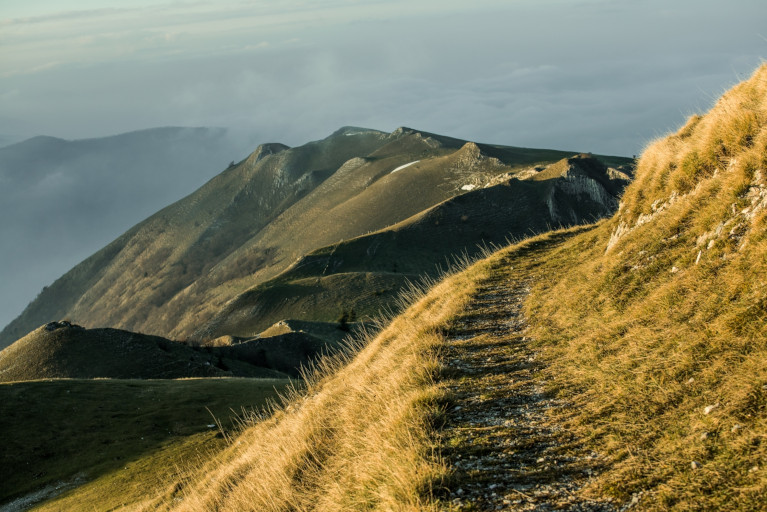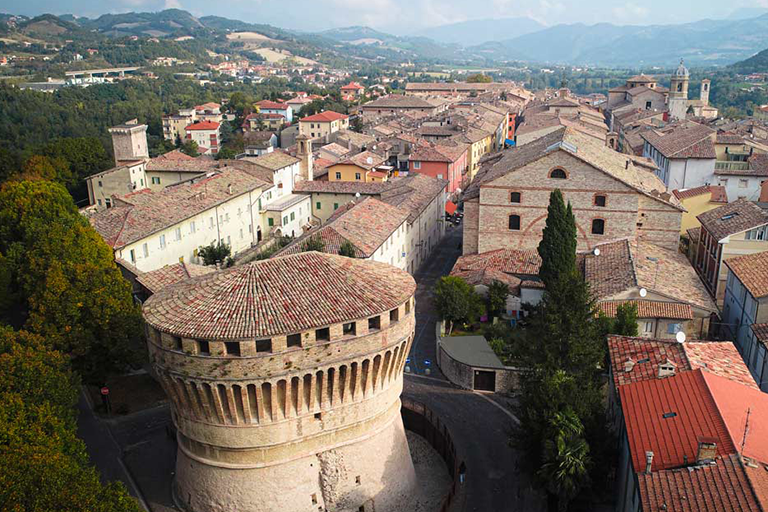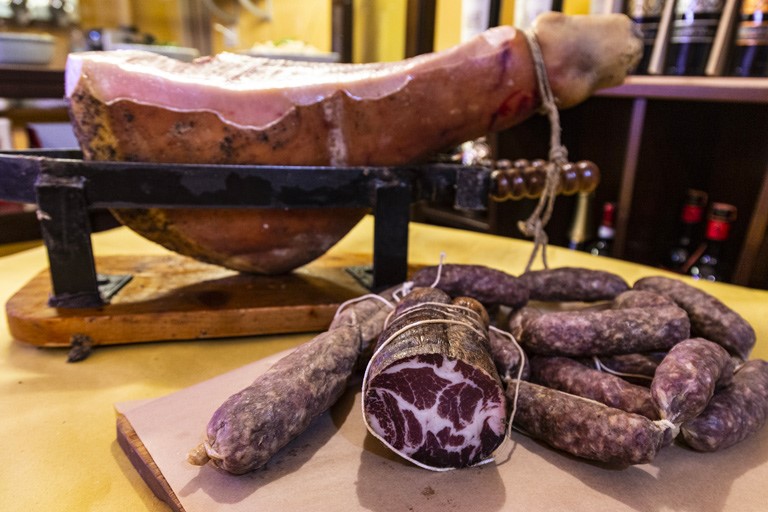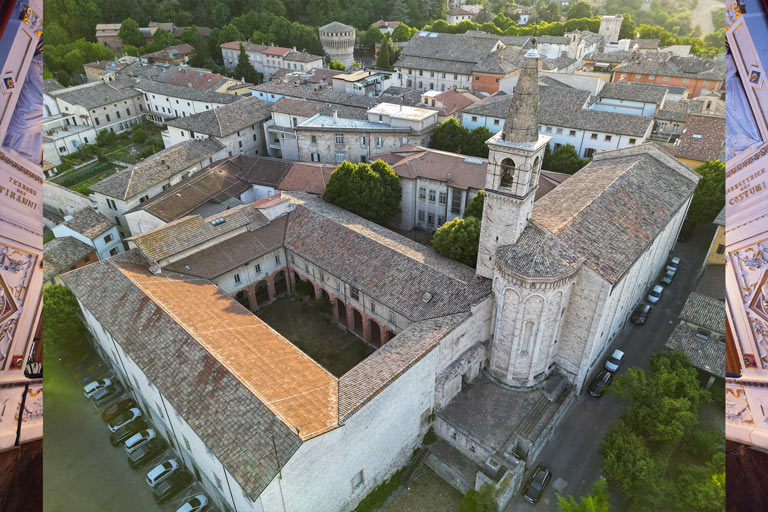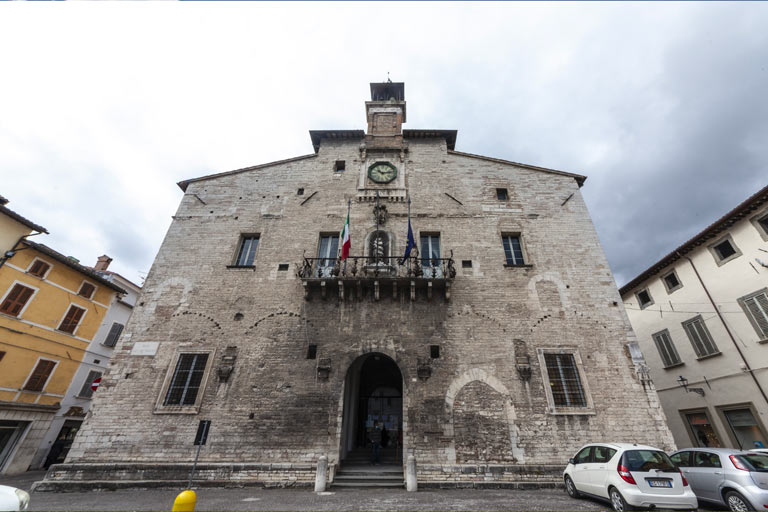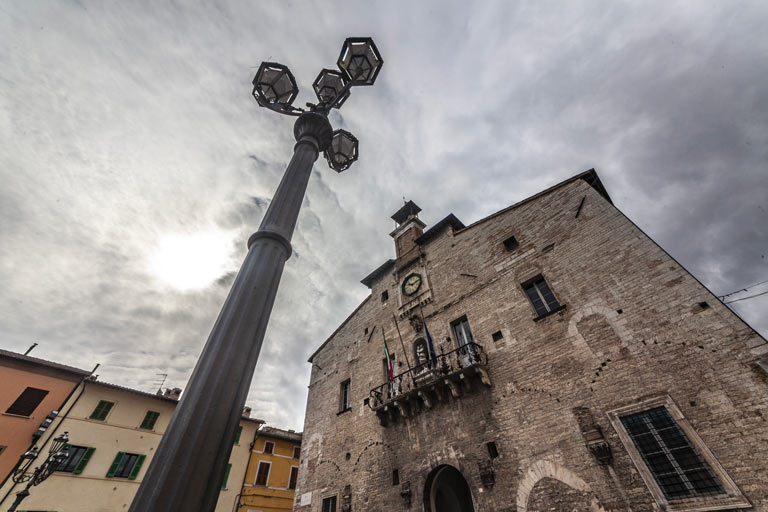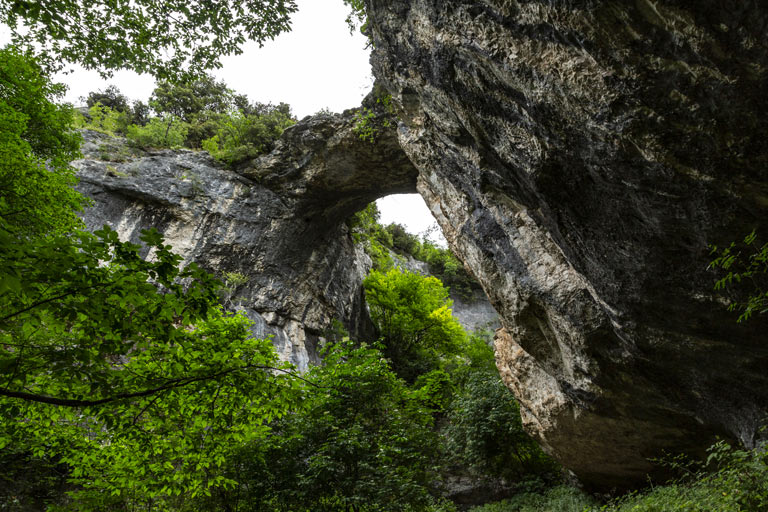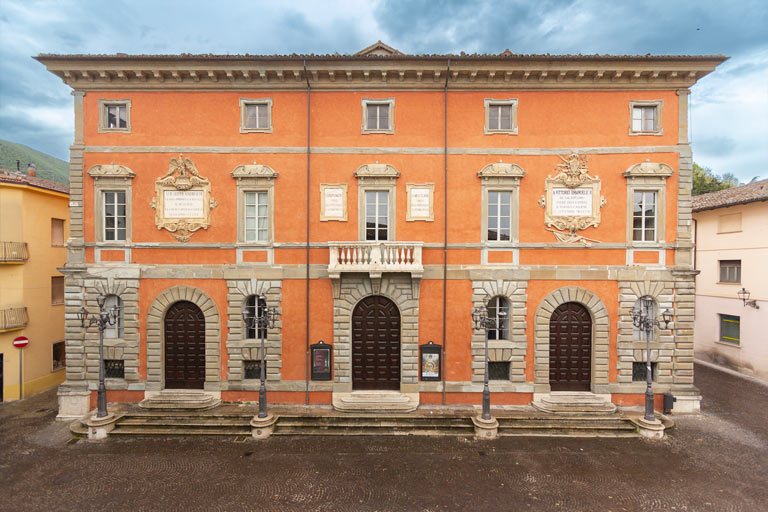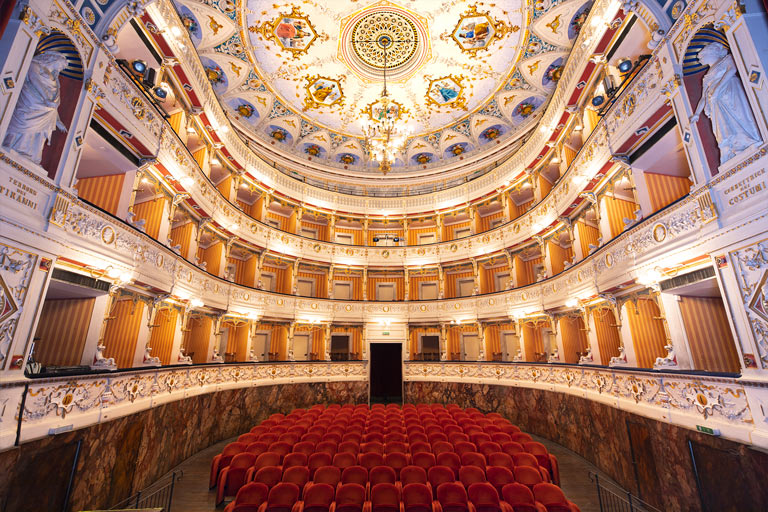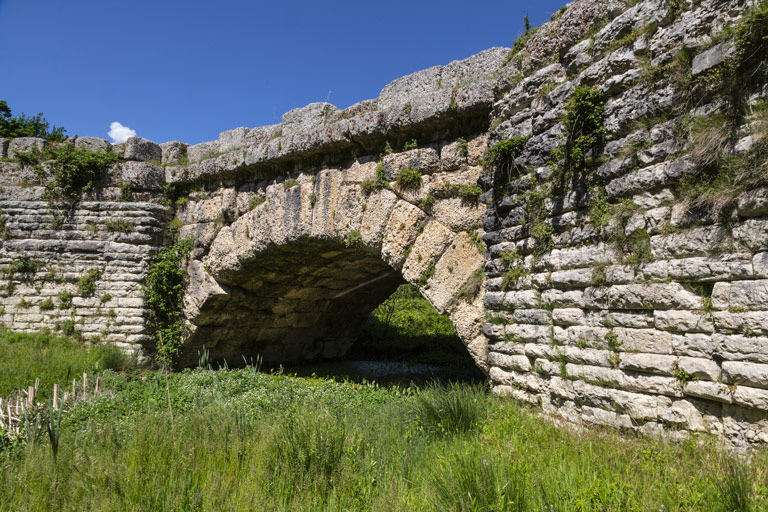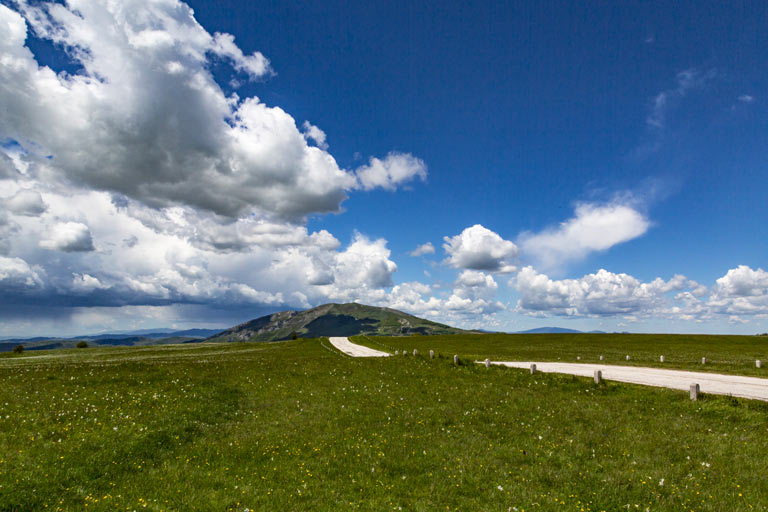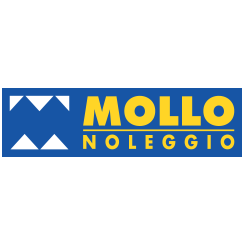profile
map
technical info
This is the toughest stage of the Tirreno-Adriatico, featuring a summit finish. It runs through the valleys of the Marchigian hinterland, with continuous ups and downs in the first part interspersed with some important climbs such as the Forchetta di Valle Avellana and the ascent of Pian di Trebbio. On the slopes of Monte Petrano, the riders will tackle the short and steep climb of Moria (about 2.5 km at 9%) to reach Cagli, where the final climb will begin.
Last km
The last kilometres involve the ascent to Monte Petrano. A 10.1 km climb at an average gradient of 8.1%, steep in the first kilometres (up to 12%), more constant in the second part, and characterised by numerous hairpin bends. When approaching the summit plateau, the gradient decreases before reaching the almost flat final straight.
start / finish
climb detail
final kilometres
itinerary timetable
tourist info
Host city:
Sassoferrato
Overview
Sassoferrato, selected as one of the most beautiful borghi in Italy, is full of treasures to discover surrounded by nature. It is located on the eastern side of the Umbro-Marchigiano Appennines, between the Regional Park of Mount Cucco and the Gola della Rossa e di Frasassi. The city is built on two levels, “Castello” and “Borgo”.
Food
The environment around Sassoferrato offers excellent ingredients, which are prepared following traditional recipes to create unique flavours.
Like a proper feast, everyone can find something to enjoy: pincinelle with mushrooms and wild asparagus, charcuterie, honey, saffron, traditional desserts and home-made jams.
The traditional pincinelle, strictly hand-made, were originally made using bread dough. They represent a first course full of simplicity, accompanied by the flavours of the locals woods, like mushrooms, asparagus and valuable truffle.
In Sassoferato you can rediscover the intense flavour of the local meat, carefully produced with high quality standards, in respect of short supply chain and animal wellbeing. The bovine and swine meat is produced with animals born and raised in open pasture and slaughtered in the local abattoir.
You can’t miss all the artisanal charcuterie, made with high quality local raw ingredients and ancient knowledge. The extraordinary pork goletta, seasoned with herbs from Mount Strega, deserves a special mention, as well as the rediscovered pork liver sausage with red wine, garlic and orange zest, as well as lard charcuterie.
Local beekeepers produce an excellent honey thanks to the nectar collected by the bees from the many varieties of flowers on our hills. A sweet flavour to combine with the local saffron, harvested with love and devotion, perfect to enjoy with fresh or dried cheese, brews and confections.
Finally, every season has its sweet delicacy made in the bakeries or in the home kitchens: boiled castagnole at Mardi Gras, sweet and savoury pies and anisette doughnuts for Easter, pies made with home-made jams in the summer and fragrant must biscuits in the fall.
Points of Interest
Just outside of the city, you can admire the ancient Roman town of Sentinum, where the great Battle of the Nations took place in 295 b.C.; here the Romans defeated Gauls and Samnites. Today it is one of the most important archaeological site in Marche.
In the “Castello” district, the oldest part of the town, situated at the top of the hill, stands the Albornoz Fortress, a military construction built in the 14th century under Cardinal Egidio Albornoz’s supervision.
Standing over Piazza Matteotti, Palazzo dei Priori is home to the Civic Archaeological Museum. In the same square there is also Palazzo Oliva, which houses the collection of Incisori Marchigiani, with more than 400 engravings made by 210 local artists On the second floor there is the Civica Raccolta d’Arte with paintings from the 15th-17th centuries.
In the older district there is also the Romanesque-Gothic church of Saint Francis. The Church of Saint Peter, probably built with the feudal castle, looms over the valley where the more modern part of the town has expanded.
Climbing down to the “Borgo” district, through the Urban Wood, surrounded by nature stands the Museum of Folk Arts and Traditions, housed inside Montanari Palace.
Palazzo Merolli, also called degli Scalzi, in the “Borgo” district, is a good example of a late Renaissance building, built over a medieval construction. It houses MAM’s, the Contemporary Art Gallery, which displays over 600 of the 4000 works obtained with the Rassegna Salvi since 1951. Inside there is also the Neoclassical church of Saint Teresa of Avila.
A few miles from the city centre is located the small town of Cabernardi; between 1886 and 1959 it was one of the most important sulphur mining centre in Europe. Today the Museum of the Sulphur Mine and the Archaea-Minerary Park of Cabernardi tell the story of a long period of social and economical wellbeing.
The Abbey of the Saint Cross, built in the 12th century by Counts Atti with recycling materials from Sentinum, is one of the most interesting proof of Romanesque architecture in Marche.
Cagli (Monte Petrano)
Overview
Cagli stands on a plateau narrowed by the Bosso and Burano rivers flowing into the Metauro. The municipality is bordered to the south by Mounts Catria, Petrano and Nerone and further north by Mount Paganuccio, which, with Pietralata, forms the steep limestone cliffs of the Furlo Pass.
Food
An area of truffles and mushrooms, many local specialities contain these precious ingredients. As for cheeses: goat’s milk cheese with fig latex (goat’s milk cheese obtained by coagulating fig latex); raviggiolo from the Catria and Nerone mountain community, a fresh curd that was sold on fig, cabbage or fern leaves; caciotta del Montefeltro (made with milk from mountain and hill pastures).
First courses include vincisgrassi (a kind of lasagna with a regional recipe from the Marche region), tagliatelle with mushrooms, polenta alla carbonara (a polenta enriched with pork cheek and pecorino cheese), pappardelle with hare.
Main courses: pork (usually black pork from the area is used), grilled meat such as grilled mutton or grilled kid; rabbit in porchetta. The black pig is also used for the production of cured meats.
The cured meats are eaten with ‘crescia brusca’, or with ‘pane sciocco’ (unsalted bread) or ‘crescia alla graticola’ (a kind of piadina).
Monte Nerone snails are a local speciality, cooked in porchetta (cooked and seasoned with fennel), recently used as an ingredient in the production of an unusual salami.
Wines and Beverage
At the end of the meal you can drink a ‘moretta’, a hot drink made with coffee, aniseed and rum.
For wines: Pesaro hills wine production area, bianchello del Metauro.
Points of Interest
- Church of San Francesco: this church, dating from 1234, is the pivot around which Cagli was rebuilt in 1289 under the patronage of the first Franciscan Pope.
- Church of San Domenico: the church was built by the Celestines, a branch of the Benedictine order, after the reconstruction of the city in 1289.
- Ponte Mallio: this superb bridge, from Roman Republican times, is one of the most imposing Roman remains along the ancient consular road, the via Flaminia, and dates back to 220 BCE. The bridge, with two arches and a series of buttresses, was built using large blocks of grigna, a local stone.
- Town Hall and Archeological Museum: Piazza Matteotti, once known as Piazza Maggiore, is dominated by the 13th century Palazzo Pubblico, or Town Hall, built to house the city’s governors. The building, onto which was added the Palazzo del Podestà was donated by the Comune to Federico da Montefeltro in 1476. From here one enters the courtyard. At its centre is the sculpture Ordine Cosmico by Eliseo Mattiacci (1997). The Museum of Archaeology and of the Via Flaminia occupies parts of the 13th century Palazzo del Podesta. The fountain at the centre of Piazza Matteotti was built in 1736 by Giovanni Fabbri, to a design by Anton Francesco Berardi.
- Tower – Secret Passage – Fortress and Centre for Contemporary Sculpture: the fortified complex, built in 1481, was designed for Duke Federico of Montefeltro by Francesco di Giorgio Martini. Particularly unusual is the secret passage, the “soccorso coverto” that links the tower to the imposing ruins of the diamond-shaped fortress, partially demolished in 1502.
- Municipal Theatre: the city’s third theatre was opened in 1878 with a performance of the opera Violine the occasion del Diavolo, written especially for the by Agostino Mercuri. Its original theatrical machinery still survives, together with backdrops and wings by Girolamo Magnani, Giuseppe Verdi’s favourite set designer.


